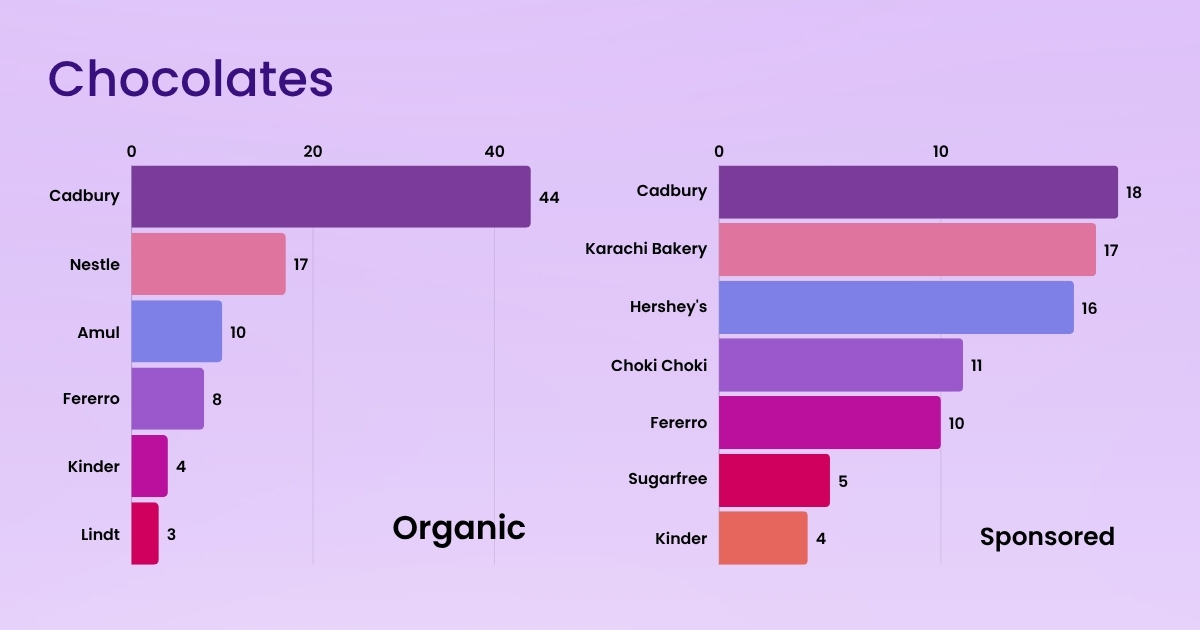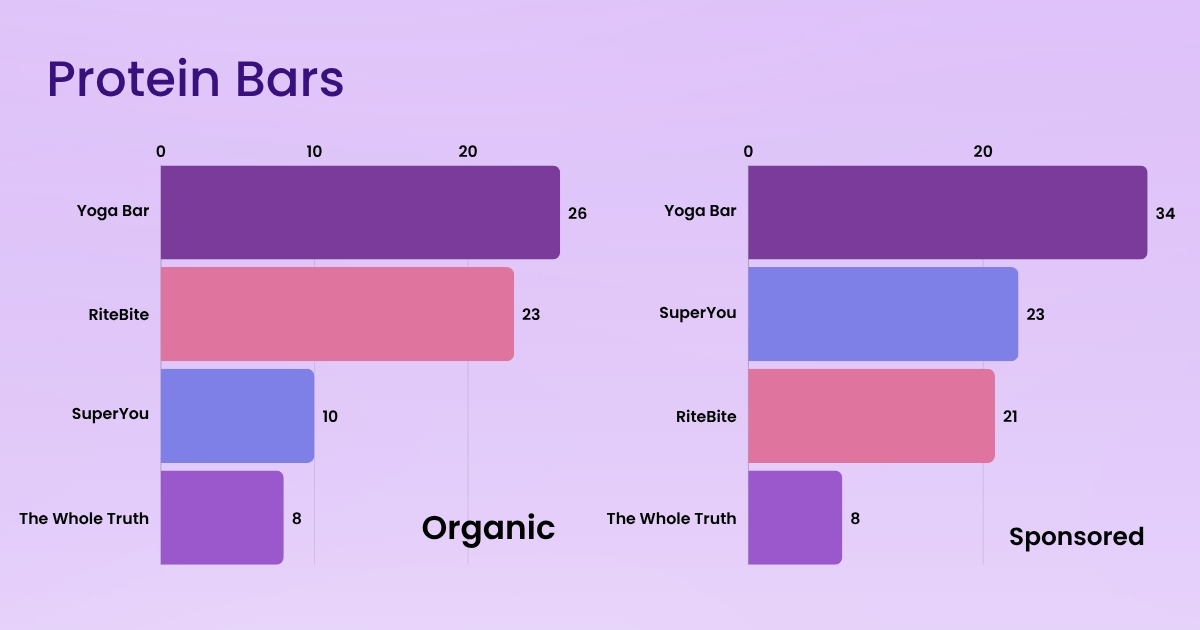The festive season in India has always been synonymous with indulgence. A time when sweets, chocolates, and celebratory treats dominate shopping baskets. But over the past few years, this definition of indulgence has been quietly evolving.
Today’s consumers are not just celebrating, they’re consciously celebrating. The modern festive shopper is as mindful about what goes into their cart as they are about what goes into their body. Chocolates remain a staple, but they now share shelf space with protein bars, low-sugar desserts, and functional snacks signaling a clear shift towards health-conscious gifting and self-consumption.
A quick look at recent festive season buying patterns confirms this transformation. Traditional sweet categories continue to grow, but health-first snacking has emerged as a parallel indulgence, driven by consumers seeking balance between taste, nutrition, and celebration. This trend is particularly visible on quick commerce platforms like Blinkit, where convenience meets conscious choice.
To decode this shift, we analyzed Blinkit’s visibility data across two key festive categories, chocolates and protein bars, examining both organic and sponsored performance. The findings reveal how evolving consumer preferences are reshaping category competition and what it means for brands preparing to win on the digital shelf for the 2025 festive season.
Chocolate Quick Commerce Trends During Festive Season: See How Cadbury is Leading & What Other Brands are Doing
We all know that the festive season brings a surge in chocolate purchases, both for gifting and self-consumption. Here’s what leading chocolate brands are doing as per mFilterIt’s analysis of BlinkIt visibility data:
- Cadbury dominates with 44% organic share and 18% sponsored share, reflecting unmatched recall and consistent marketing strength.
- Nestlé and Amul follow Cadbury with a strong combined organic visibility of 27% but show limited investment in sponsored visibility.
- Karachi Bakery and Hershey’s rely heavily on paid visibility with 18% and 16% of share, respectively, to secure attention and compete with leading players.

Protein Bar Quick Commerce Trends During Festive Season: Who’s Winning the Festive Protein Bar Battle on Blinkit
The energy and protein bar category tells an equally revealing story. Here’s how brands are winning over the health-conscious consumer market:
- In terms of organic share, Yogabar leads the market with 26%, followed by RiteBite at 23%, SuperYou at 10%, and The Whole Truth at 8%.
- When it comes to sponsored visibility, Yogabar again takes the top spot with a 34% share, while SuperYou follows at 23%, RiteBite at 21%, and The Whole Truth at 8%.

How mFilterIt’s Ecommerce Analytics Help Brands Win on Digital Shelf: A DIY Checklist
As festive demand surges, managing visibility across quick commerce platforms like Blinkit, Zepto, and Swiggy Instamart becomes a daily challenge. Product rankings shift by the hour, competitor bids fluctuate, and stockouts can affect the momentum significantly. To stay ahead, category managers need real-time digital shelf analytics that help them track visibility, optimize performance, and make fast, data-driven decisions.
That is where mFilterIt’s Ecommerce analytics tool – mScanIt, helps brands unify visibility, performance, and competitive intelligence to maintain the right balance between organic discoverability and sponsored visibility, ensuring every SKU performs at its best during festive peaks like Diwali.
Learn about the benefits of e-commerce shelf monitoring in the digital commerce ecosystem.
Here’s a Checklist for Quick Commerce and Ecommerce Brands to Stay Ahead This Festive Season:
1. Monitor visibility performance in real-time
On quick commerce platforms, what consumers see is what they buy. Visibility fluctuates by the hour, driven by algorithmic changes, competitor bids, and inventory availability. Failing to track visibility – both organic and sponsored means losing ground when it matters most.
How mScanIt helps: The discoverability tracker helps brands track real-time visibility insights across SKUs and categories, highlighting when competitors outrank or outbid your products. This enables quick, data-backed reactions to protect your brand’s share of shelf during peak hours.
2. Build the Right Balance Between Organic and Sponsored Presence
A successful festive strategy is about spending smart, not more. Overspending on ads for already visible SKUs and underinvesting in low-ranked ones can dilute returns. A balanced strategy between organic strength and paid promotion is essential to maximize efficiency and impact.
How mScanIt helps: Using the category share analysis, brands can clearly see the split between organic and sponsored visibility. This helps allocate ad budgets more strategically, investing where it drives incremental visibility and optimizing where organic performance already holds strong.
3. Strengthen Product Content for Festive Discoverability
Even the leading brands lose visibility if their product listings are incomplete or outdated. Content hygiene is one of the key features to stay visible and discoverable on the digital shelf. Optimized content with accurate titles, high-quality images, and relevant keywords helps your SKUs rank higher, appear in contextual searches, and attract impulse buyers. Inaccurate titles or missing visuals lower click-through rates and reduce purchase intent, especially when competition intensifies.
How mScanIt helps: The content audit tool helps automatically identify missing details, inconsistent visuals, and irrelevant keywords. It ensures each SKU is optimized for discoverability using festive, gifting, and wellness-focused search terms that reflect current consumer intent.
4. Enhance Brand Trust Through Positive Consumer Feedback
During festive sales, new buyers often depend on reviews and ratings to make purchase decisions. Proactive review management directly influences conversion rates and brand credibility.
How mScanIt helps: The review sentiment analysis helps keep a track of consumer feedback in real time, identifying recurring issues and positive sentiment drivers. This enables brands to respond quickly, fix problems, and strengthen their overall reputation before festive peaks.
5. Keep Your Bestsellers Always Available
Out-of-stock issues can instantly halt sales momentum. Especially during peak demand times, stockouts not only reduce conversion but also push competitors up on the digital shelf. Consistent stock availability ensures continuity in visibility and prevents algorithmic ranking drops. For high-demand SKUs, real-time stock monitoring directly helps increase sales and brand dominance.
How mScanIt helps: The availability tracker continuously monitors stock levels and sends alerts for low or out-of-stock items. This helps category managers coordinate replenishment on time and prevent competitor takeovers of key listing spaces.
Know how a beverage giant optimized product availability across qcom platforms.
6. Maintain Competitive Pricing During Festive Fluctuations
Dynamic pricing is critical for maintaining competitiveness without eroding margins. Competitors frequently adjust festive discounts, undercutting you at critical hours and brands that fail to adjust pricing in real time risk being outbid or undercut, losing both visibility and conversions.
How mScanIt helps: The pricing intelligence tool provides real-time insights into competitor pricing, discount trends, and dynamic changes across platforms. These insights help brands make changes in pricing strategy accordingly, staying competitive without compromising profitability.
Therefore, the festive season isn’t just about reacting to sales spikes; it’s about understanding what drives them. Every click, search, and purchase offers valuable insight into how consumers think, choose, and celebrate. Brands that move beyond short-term fixes to build long-term strategies, using real-time data on visibility, pricing, and performance to stay ahead not just during Diwali, but all year round.
Conclusion: Festive Wins are Built on Data
Festive campaigns move fast and so must brands, as they need to continuously monitor consumer behavior and market shifts because festive success in quick commerce depends on the ability to turn data into actionable competitive intelligence.
Brands that continuously track organic visibility and sponsored visibility, leverage data-driven insights to anticipate market trends, align promotions with consumer intent, and refine SKUs based on real-time performance and insights by ecommerce intelligence solutions stay ahead of the competitors, not just during Diwali, but through every festive cycle.
This festive season, don’t just keep up with the competition, lead it. Let data guide your next move with mFilterIt’s ecommerce analytics tool.
Frequently Asked Questions
1. What are the top quick commerce trends during the festive season?
In India, during Diwali and other festive periods, categories like chocolates, snacks, and gifting SKUs see massive spikes on platforms like Blinkit. Quick commerce data shows that impulse buys and last-minute gifting drive most of the festive growth for brands.
2. Why does visibility matter so much on quick commerce platforms?
Visibility directly influences purchase decisions. Consumers usually buy what they see first. That is why brands with higher digital shelf presence across both organic and sponsored rankings often see stronger click-through and conversion rates.
3. How do organic and sponsored visibility differ on platforms like Blinkit?
Organic visibility reflects brand recall, search strength, and trust, earned through consistent performance. Sponsored visibility is paid, helping brands appear at the top during high intent buying moments, especially during festive peaks.
4. How can category managers use data to improve festive performance?
By tracking visibility data in real time, including share of search, sponsored ranking, and SKU performance, category managers can make faster, smarter decisions on promotions, inventory, and pricing.
5. What challenges do brands face on the quick commerce digital shelf?
The biggest challenges are maintaining organic vs sponsored visibility on quick commerce platforms during peak demand, monitoring competitor movements, optimizing sponsored budgets, and ensuring product content consistency across fast-moving SKUs.
6. How can mFilterIt help brands optimize their visibility on quick commerce platforms?
mFilterIt’s digital shelf analytics for quick commerce gives brands a real-time view of their product visibility, keyword ranking, content accuracy, and competitor activity, helping them close performance gaps and stay discoverable during festive peaks.
7. How can brands sustain visibility even after the festive season ends?
Brands can use mFilterIt’s analytics to monitor retention metrics post festive campaigns, grow organic visibility through reviews, and maintain consistent content hygiene, turning short-term festive momentum into long-term category leadership.



